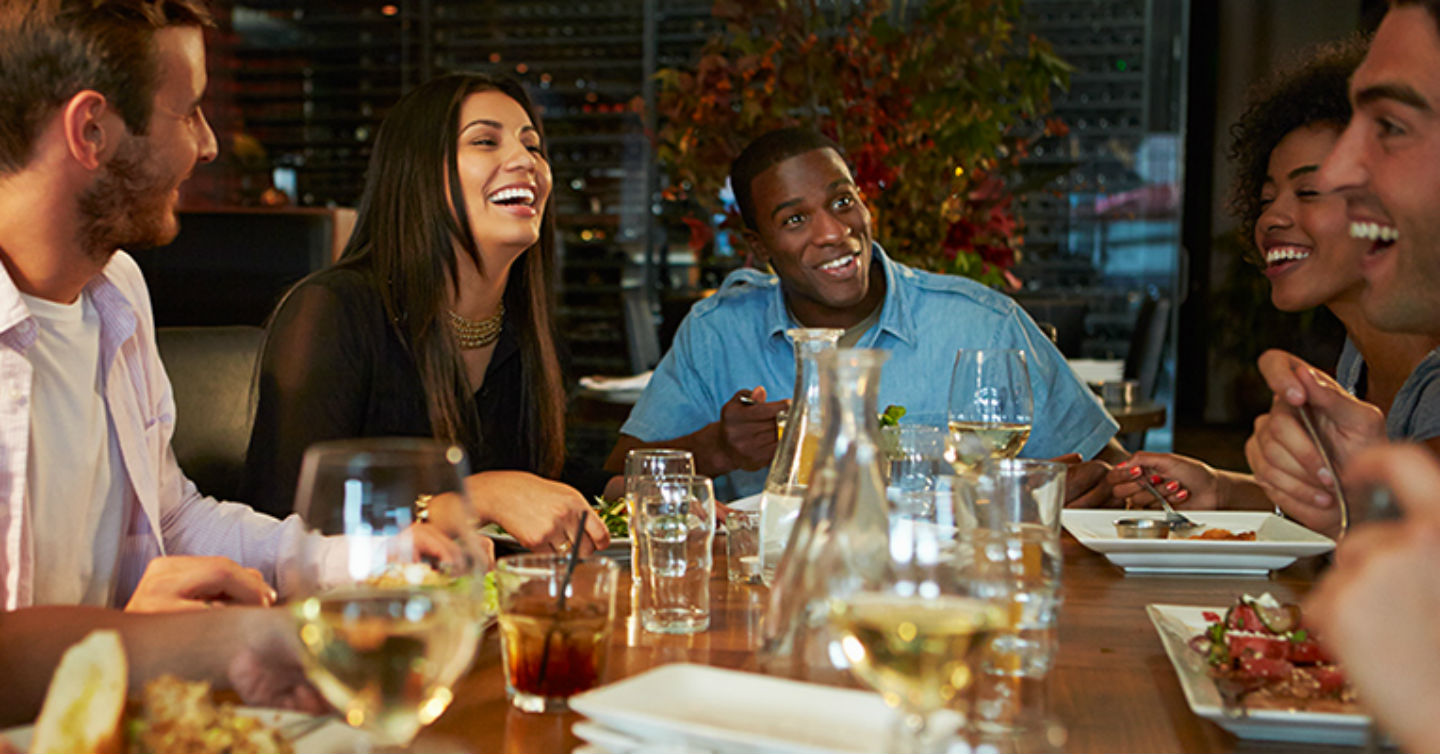Tips for Eating Out

Tips for Staying Healthy While Eating Out
In today’s busy world, more meals are being eaten on the go or at a restaurant. According to the National Restaurant Association, Americans eat about 24 percent — almost one quarter — of our meals away from home.
Eating out can result in overindulging and overeating, but it shouldn’t be an excuse to eat unhealthy foods. By having a plan and following these basic guidelines you can enjoy your next restaurant meal without guilt.
Plan ahead
Preview the restaurant’s menu ahead of time. Look for options that are higher in protein, fiber and lower in calories, fat, sugar and sodium. Many restaurants have nutrition information on their website so you can see what healthier options are available.
Don’t go hungry
It takes your brain about 20 minutes to signal to your body that you are full. If you’re hungry when you begin eating, you’re more likely to eat your food quickly and forget about the calories you are consuming. Avoid this by eating a small, healthy snack before you go out to eat.
Watch the wording
The way meals are worded on the menu tells you how they’re prepared. Look for items that include the words grilled, broiled or steamed. These foods are made with little or no added fats. Avoid dishes that are fried, breaded, smothered, rich and creamy.
Ask questions
If you are not sure how a dish is prepared, ask. You can also ask for substitutions such as a side salad instead of fries. Don’t be afraid to ask for a dish to be made with less sauce or cheese. If you are ordering a salad, ask for the dressing to be placed on the side.
Mention that you don’t want the extras
If you are at a restaurant where they serve bread or chips before the meal, ask the server not to bring it out. By doing this, you won’t fill up on extra calories before your meal comes out.
Share your meal
Sharing meals is a great way to practice portion control. Most restaurants give you at least a double portion. Having food in front of you makes you more likely to eat too much.
Eat vegetables
Vegetables are an excellent source of fiber which keeps us fuller for longer. Making vegetables the center of your meal when eating out, can ensure you’re getting enough fiber in your meal. This will keep you full, maintain a healthy blood sugar level and can prevent you from overeating.
Drink a lot of water
Being thirsty and being hungry can feel very similar. Always order a glass of water and keep it filled. Drink plenty of water before, during and after your meal to make sure you’re hydrated.
Pause between bites
After each bite of your meal, casually place your fork or utensil on the plate or bowl until you’ve fully chewed your bite. Make sure to chew slowly. This will help you eat more slowly and gives your brain time to signal that your body is full.
Ask for a box
When ordering a larger portion, ask for half the food to be put into a to-go box right away. If it is not on your plate, you are less likely to eat it.
Have your own tips for eating healthy when you’re eating out? Share them in the comments below.

